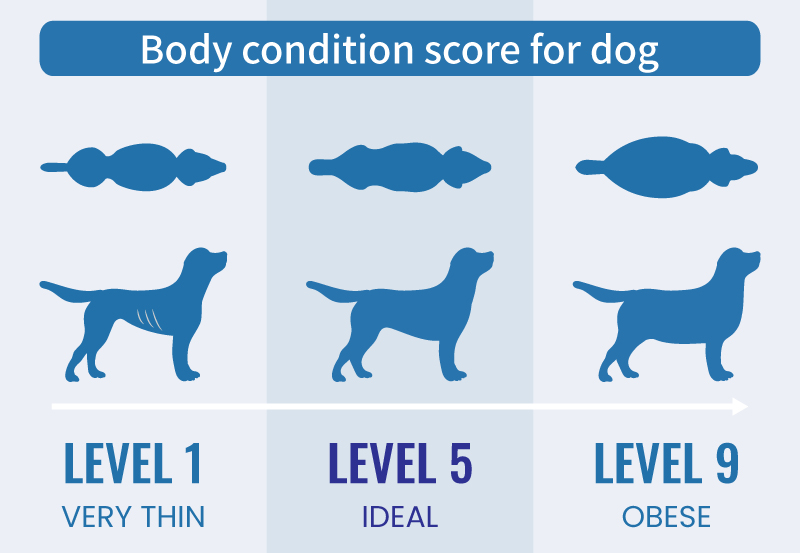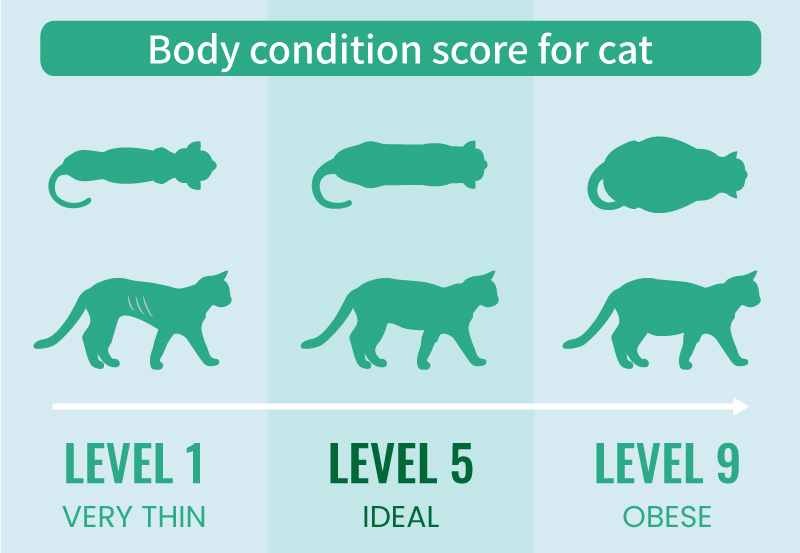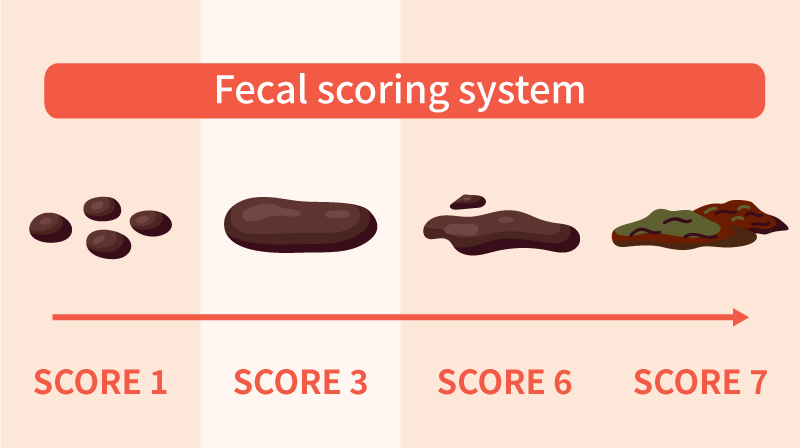Dietary Supplementation for Better Pet Gut Health
How is the stomach of cats and dogs different from ours? What should we pay attention to ensure healthy gut for dogs and cats? Let's dig into some research!
The length of the human intestine is about 8 meters long and is adequate to digest and absorb nutrients. However, the dog's intestinal length is only half of ours (about 4.5 meters), and the cat's intestinal length is even shorter (about 2 meters). Therefore, their digestion capacity is considerably lower than that of humans, and feeding our food to fur babies may lead to gastrointestinal problems in dogs and cats.
Healthy Diet Is without a Doubt the Foundation of Healthy Living. But, How Do We Ascertain that Our Fur Babies Eat Healthily?
There are two standard scoring methods to measure the gastrointestinal health of cats and dogs.-
BCS (Body Condition Score)
In addition, when viewed from above, the waist can be easily noted, and the abdomen tucked up when viewed from the side.
Note that cats are born with a sagging belly as a protective layer called the primordial pouch. Don't mistake the primordial pouch for fat!


-
Fecal Scoring System
Score 2 is normal, being firm and pliable, segmented in appearance with little or no residue left on the ground when picked up.

The most common clinical symptoms of GI problems in fur babies are vomiting and soft stools. When you notice your cat or dog has digestive problems, record the composition, type and color of the vomit or stool immediately. This information can help a vet make an initial diagnosis.
- A vomit containing half-digested food or foreign objects may be an indication that the fur baby has poor digestion or abnormal peristalsis.
- If the vomit contains worms, your fur baby likely has a parasitic infection in the digestive tract. It is generally recommended that your pets be dewormed every six to twelve months.
- White foamy or yellow vomit usually indicates excessive gastric acid secretion caused by digestive diseases or starvation for a long period.
- Red vomit could indicate upper gastrointestinal problems, possibly due to excessive vomiting, foreign body stabbing, or acute digestive diseases.
- Hard and pebble-like stools are signs of constipation due to insufficient water intake.
- Soft stools with no definite shape show abnormal digestion or excessive peristalsis. If accompanied by frequent loose stools, pay special attention to the dehydration and weakness of the fur baby.
Stool color also tells us a lot about the gastrointestinal health of cats and dogs.
- Chocolate brown poop is normal, but a reddish color may indicate bleeding of the lower gastrointestinal tract due to ulcer.
- A darker color may indicate bleeding of the upper gastrointestinal ulcer. However, the color of the feces may vary by their diet, so you need to inform the vet about what your pet ate during the clinical visit for a more accurate diagnosis.
Abdominal pain is also a warning sign of digestive disorders. Fur babies can't talk, but they communicate through their body language. For example, abdominal pain may make them appear to be trembling, less active, and lose appetite. They may dodge when pressing their abdomen and even suffer from shortness of breath and drooling in severe cases.
Digestive problems in fur babies may be caused by an unsuitable diet alone, or in severe cases, pancreatitis or infectious diseases, even those related to chronic diseases of various organs. So it's important to pay attention to the signs that show that your pet may have digestive problems and get necessary help immediately.
Prevention Is Better Than Cure. So, What can be done to Prevent Gastrointestinal Problems in Cats and Dogs?
Ensure Healthy Diet
Choose pet food with simple ingredients and avoid highly processed ones. Check to see if the food is fully digested and absorbed by using the body and fecal scoring criteria described above.Use Pet Dietary Supplements
Adequate digestive supplements and enzymes facilitate nutrient digestion and absorption in pets. You can also give your pets probiotics and prebiotics. Prebiotics serve as food for probiotics, and probiotics aid the absorption of nutrients and improve the gut microbiota activity by suppressing harmful bacteria.For fur babies with pancreatitis, in particular, it is recommended to supplement enzymes and probiotics/prebiotics after recovery to help the body digest and absorb nutrients effectively, thereby reducing the risk of pancreatitis recurrence.
You must understand the differences in digestive systems between furbabies and humans and provide them with appropriate diets and health care products. When a warning sign appears in your pet's digestive system, put away the food and water, let your pet fast for 4-6 hours, and then feed them small and frequent meals. If symptoms recur, seek medical assistance to prevent missing the golden treatment window!



Sarcopenia in Aging Dogs and Cats: Hidden Risks of Muscle and Joint Degeneration and Strategies for Care!What Is Sarcopenia? It’s More Than Just “Getting Thinner!
As dogs and cats grow older, many pet owners notice reduced activity levels and apparent weight loss. While these changes are often dismissed as normal signs of aging, they may actually indicate a more serious condition — sarcopenia. Sarcopenia is the gradual loss of muscle mass and strength caused by aging or chronic illness. Unlike general weight loss, which may involve fat or overall body mass, sarcopenia specifically targets muscle tissue. This means that even if a pet’s body weight appears stable, they could still be experiencing significant muscle loss.

The Complete Guide to Spaying and Neutering Your Pets: Surgery, Operative Care and Long-Term Health
Do cats and dogs really need to be spayed or neutered?” It’s one of the most frequent questions pet owners ask. Spay and neuter procedures go far beyond birth control—they are closely tied to better behavior, longer lifespans, and overall well-being. But surgery is only the first step. Lasting health depends on attentive post-operative care and the right nutritional support. Without it, pets may face higher risks of metabolic imbalances and chronic conditions. In this article, we’ll cover why and when spaying or neutering is truly necessary, how to prepare before and after surgery, a complete guide to operative care, and the common causes of slowed metabolism after the procedure—along with practical nutrition tips to help your furry companions stay healthy for years to come.








